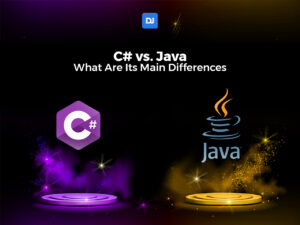Time zone overlap can be a powerful strategy for effective communication, collaboration, and productivity within remote developer teams. A FlexJobs report revealed that 54% of remote workers believed time zone differences contributed to quicker project completion due to the ability to work on tasks around the clock.
By strategically harnessing the benefits of time zone differences, dev teams can unlock their full potential, gaining a competitive edge in the dynamic landscape of software development.
Let’s explore why time zone overlap can be beneficial when working with software developers, what countries share similar time zones to the US, and what best practices to manage developers with diverse time zones.
What is Time Zone Overlap?
Time zone overlap refers to the period of time during which the working hours of individuals or teams in different geographic locations coincide. It is the time span when there is an intersection of operational hours between two or more time zones.
The concept of “Time zone overlap” is particularly relevant in the context of remote teams that involve coordination, communication, and collaboration across different regions of the world.
This allows dev teams to have real-time communication, synchronous collaboration, and the ability to address tasks, issues, or decisions without significant delays.
For example, suppose a software development team in San Francisco has a four-hour overlap with a testing team in Bangalore. In that case, they can conduct joint meetings, address issues, and exchange feedback during those shared hours, enhancing productivity.
Is Time Zone Overlap the Same as Opposite Time Zone?
No, time zone overlap and opposite time zones are not the same concepts, although they are related and often used in the context of remote teams.
Time zone overlap refers to the period of time during which the working hours of individuals or teams in different locations coincide.
Opposite time zone, on the other hand, refers to selecting team members from regions with nearly 12-hour time differences, covering the entire 24-hour day.
Why is Time Zone Overlap Beneficial for Your Business When Working with Developers?
Time zone overlap can be a strategy approach that amplifies efficiency across various time zones. Here’s why:
1. Real-Time Collaboration
Time zone overlap allows developers from different parts of the world to collaborate in real time. This means they can engage in immediate discussions, hold virtual meetings, and address issues promptly, enhancing communication and teamwork.
By having real-time collaboration, developers can accelerate the development cycles through faster iteration and feedback. They can work concurrently on the same codebase, allowing for real-time testing and rapid issue identification and resolution.
By minimizing communication overhead, establishing meetings at certain hours where time zones overlap, reducing the need for lengthy explanations and back-and-forth communication, resulting in quicker decision-making.
This becomes even more valuable in scenarios where immediate input is necessary to keep development on track.
2. Solve Problems Faster
When developers share overlapping working hours, they can quickly address and resolve bugs, errors, or challenges that arise during the development process. This can lead to faster project progress and more efficient troubleshooting.
A study by Owl Labs in 2019 found that 71% of remote workers felt that having overlapping hours with their team members positively impacted their work.
3. Helps Boost Decision-Making Processes
With time zone overlap, decision-makers can interact and make crucial project choices without significant delays. This prevents bottlenecks and ensures that important decisions are made promptly.
Also, if it’s needed to have a meeting with different team members, they can set a common time and get to work with a more organized agenda on things that matter the most.
Software development often involves making decisions on architecture, design, and implementation. With time zone overlap, developers can facilitate dynamic discussions and immediate feedback, which leads to adapting their decisions based on real-time insights.
4. Continuous Workflow
Time zone overlap facilitates a continuous workflow across different stages of development.
For example, a development team in one-time zone can complete tasks during their workday, and the testing or QA team in another time zone can take over during their work hours.
Additionally, when developers work within similar time frames, the transition between tasks becomes smoother as it reduces the time lost during context switching, minimizing any productivity gaps that might arise.
5. Global Market Coverage
If your development team works with clients or users from various regions, time zone overlap allows you to provide better support and service. Developers can address customer queries and issues during overlapping hours, leading to improved customer satisfaction.
6. Enhanced Productivity
The ability to collaborate and communicate in real time can lead to increased productivity. Developers can resolve issues faster, make quicker progress, and efficiently coordinate efforts.
This approach also eradicates the necessity for lengthy email threads or conversations in chat applications, which, at best, consume time and, at worst, hinder productivity.
A study by the Harvard Business Review in 2014 noted that teams with greater time zone overlap tended to outperform those with minimal overlap due to improved communication and task coordination.
7. Reduced Project Delays
Swift communication and problem-solving resulting from time zone overlap can minimize project delays caused by waiting for responses or solutions from distant team members.
Time zone overlap ensures that critical discussions, problem-solving sessions, and decision-making processes can occur without the prolonged waiting periods that often accompany asynchronous communication.
Team members can engage in live discussions, address concerns promptly, and collectively make informed choices, all of which contribute to keeping projects on schedule.
8. Talent Pool Expansion
Embracing time zone overlap allows you to tap into a global talent pool, enabling you to hire skilled developers from different regions. This can lead to a more diverse and capable team.
If you only depended on one time zone, your talent pool automatically reduces as you will only focus exclusively on certain areas. But by recruiting developers in international locations with similar time zones, you significantly expand your chances of hiring more skilled talent at affordable rates.
6 Countries with Similar Time Zones to the US
If your company is based in the U.S. and you´re looking to expand your software development team with global developers, these are some countries with similar time zones to the US:
| Country | Time Zone | Time Difference from US |
| Mexico | Central & Mountain | -1 to -2 hours |
| Colombia | Colombia Time | -1 hour |
| Argentina | Argentina Time | -2 to -3 hours |
| Brazil | Brasília Time | -2 to -5 hours |
| Ecuador | Ecuador Time | -1 to -2 hours |
| Peru | Peru Time | -1 to -2 hours |
| Costa Rica | Central Standard Time | -1 to -2 hours |
| Uruguay | Uruguay Time | -2 to -3 hours |
Is it Better to Work With Developers in Time Zone Overlap or Opposite Time Zones?
Whether it’s better to work with developers in time zone overlap or opposite time zones depends on various factors, including the nature of the project, the dynamic of your team, communication strategies, and the specific goals of the development process.
Both have advantages and challenges, so it’s key to review your team structure and, based on that, decide what’s best with your project’s requirements and team capabilities.
For projects requiring rapid iterations, immediate collaboration, and a cohesive team environment, time zone overlap might be more suitable.
On the other hand, projects benefiting from continuous workflow, global coverage, and a diverse skill pool might thrive with developers in opposite time zones.
Tips to Manage a Global Team of Developers Successfully Considering Time Zones
1. Start by Organizing Your Team’s Time Zones
When you manage a team of developers who have different time zones, the first step is to get organized. You can start by writing down all the time zones and asking your employees to set their preferred work hours.
The easiest way to do this is by asking them to set their working schedule on Slack or the communication tool you prefer. Additionally, in a spreadsheet, write down the time zone, work schedule, and encourage team members to set their time off and holidays.
This way, you can easily identify overlapping working hours and set meetings to encourage real-time collaboration, brainstorming, and decision-making activities.
2. Identify The Tools Needed For Smooth Communication
Time zone overlap is not only about synchronous communication but also about fostering async collaboration as well, which takes an important place in remote work.
The best way you ensure effective remote collaboration is through tools. As a team leader, you need to select the tools that best adapt to your needs and allow you to organize each project and distribute tasks.
Project management tools like Basecamp, Monday, and Asana, among others, are perfect to track what your employees are working on, identifying roadblocks, and, ultimately, collaborate smoothly.
Additionally, besides using common real-time communication tools like Zoom or Meets, ensure all your team uses the same communication channels to centralize and organize communication.
For example, set clear policies in terms of what tools to use for what. Meetings through Zoom, check-ins, updates, or sharing resources through Slack. You can even consider making a simple playbook so everyone is clear about these expectations.
3. Prioritize Documentation
It’s easy to resolve doubts when you have synchronous meetings. The thing with remote teams is that you don’t share these common working hours. Here’s when organizations and documentation are key.
By maintaining comprehensive documentation of project requirements, coding standards and development processes, you ensure that there are no gaps and that everyone can solve their doubts without the need to wait for you or someone else to answer.
Hire and Manage a Remote Dev Team with DistantJob
Whether you´re looking for software developers for a simple project or a complex one, by hiring remotely, you automatically gain a competitive advantage of having access to top talent that locally you wouldn’t be able to access.
However, if you´re not sure where to start and need advice to source, onboard and manage remote developers, book a discovery call. We will take you through our processes and methods that have made us help hire top-tier developers for our clients for more than a decade.
Want to know more?
FAQ
The easiest way to calculate time in another time zone is through a time zone converter. These are free websites to help you find time-zone compatibility within your team: WorldTimeBuddy, Timeanddate, Savyytime, and Timezonecalculator.
Time zone overlap refers to the period during which two or more different time zones share a common span of working hours. It’s the duration when people in these time zones are awake and active simultaneously, facilitating real-time communication, collaboration, and coordination.
To effectively manage remote teams in different time zones, establish clear communication channels and expectations for overlapping work hours while also promoting flexibility and autonomy to accommodate diverse schedules and ensure collaborative productivity. Utilize tools and software that facilitate asynchronous communication and project tracking to maintain cohesion and track progress across dispersed time zones.





